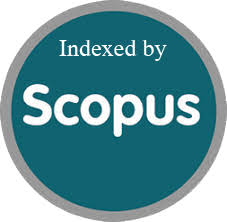Advancing EMG Finger Movement Classification with Feature Extraction and Machine Learning
Abstract
In prosthetic finger development using electromyogram (EMG) data, a crucial challenge is accurately recognizing finger movements, thus requiring developed models that process EMG signals, facilitating independent finger gesture classification with high accuracy. To successfully classify an EMG signal, the feature selection should be carefully evaluated. However, many studies on EMG signal classification have employed a feature set that includes several redundant elements. In this study, several combinations of time domain features are employed for EMG signal reduction. In addition, two models of CNN namely: (CNN-1, CNN-2), DFNN, LSTM, and GRU architectures are proposed to provide high accuracy with minimal computational overhead and minimum parameters. Through careful model selection and hyperparameter optimization, the models effectiveness was enhanced. The models were evaluated based on accuracy, precision, recall, and F1-score metrics. Among the proposed models, CNN-1 resulted in a good balance in terms of accuracy, computational time, and memory size, with an accuracy of 97.3 in 0.96 minutes with 890.73 KB size of memory. Furthermore, a comparison against earlier work confirmed the efficacy of the approach.
References
- .https://www.dreamstime.com/royalty-free-stock-photos-woman-hand-scissors-gesture-image28257308
- .https://www.kaggle.com/datasets/nccvector/electromyography-emg-dataset
- A. Phinyomark, P. Phukpattaranont, and C. Limsakul, "Feature reduction and selection for EMG signal classification," Expert systems with applications, vol. 39, no. 8, pp. 7420-7431, 2012.doi.org/10.1016/j.eswa.2012.01.102
- A. Subasi and E. Yaman, "EMG signal classification using discrete wavelet transform and rotation forest," in CMBEBIH 2019: Proceedings of the International Conference on Medical and Biological Engineering, 16 18 May 2019, Banja Luka, Bosnia and Herzegovina, 2020: Springer, pp. 29-35.doi.org/10.1007/978-3-030-17971-7_5
- A. Subasi, "Classification of EMG signals using PSO optimized SVM for diagnosis of neuromuscular disorders," Computers in biology and medicine, vol. 43, no. 5, pp. 576-586, 2013.doi.org/10.1016/j.compbiomed.2013.01.020
- A. Subasi, E. Yaman, Y. Somaily, H. A. Alynabawi, F. Alobaidi, and S. Altheibani, "Automated EMG signal classification for diagnosis of neuromuscular disorders using DWT and bagging," Procedia Computer Science, vol. 140, pp. 230-237, 2018.doi.org/10.1016/j.procs.2018.10.333
- A. Sultana, F. Ahmed, and M. S. Alam, "A systematic review on surface electromyography-based classification system for identifying hand and finger movements," Healthcare Analytics, vol. 3, p. 100126, 2023.doi.org/10.1016/j.health.2022.100126
- A. Sultana, M. T. I. Opu, F. Ahmed, and M. S. Alam, "A novel machine learning algorithm for finger movement classification from surface electromyogram signals using welch power estimation," Healthcare Analytics, vol. 5, p. 100296,2024.doi.org/10.1016/j.health.2023.100296
- C. K. Bhattachargee, N. Sikder, M. T. Hasan, and A.-A. Nahid, "Finger movement classification based on statistical and frequency features extracted from surface EMG signals," in 2019 International Conference on Computer, Communication, Chemical, Materials and Electronic Engineering (IC4ME2), 2019: IEEE, pp. 1-4. doi: 10.1109/IC4ME247184.2019.9036671
- C. Millar, N. Siddique, and E. Kerr, "LSTMclassification of sEMG signals for individual finger movements using low cost wearable sensor," in 2020 International Symposium on Community-centric Systems (CcS), 2020: IEEE, pp. 1-8. doi: 10.1109/CcS49175.2020.9231515
- C. Tepe and M. Erdim, "Classification of emg finger data acquired with myo armband," in 2020 International Congress on Human-Computer Interaction, Optimization and Robotic Applications (HORA), 2020: IEEE, pp. 1-4.doi: 10.1109/HORA49412.2020.9152850
- C. Tepe and M. Erdim, "Classification of surface electromyography and gyroscopic signals of finger gestures acquired by Myo armband using machine learning methods," Biomedical Signal Processing and Control, vol. 75, p. 103588, 2022.doi.org/10.1016/j.bspc.2022.103588
- D. Huang and B. Chen, "Surface EMG decoding for hand gestures based on spectrogram and CNN-LSTM," in 2019 2nd China Symposium on Cognitive Computing and Hybrid Intelligence (CCHI), 2019: IEEE, pp. 123-126.doi: 10.1109/CCHI.2019.8901936
- E. Gokgoz and A. Subasi, "Comparison of decision tree algorithms for EMG signal classification using DWT," Biomedical signal processing and control, vol. 18, pp. 138-144, 2015.doi.org/10.1016/j.bspc.2014.12.005
- G. Jia, H.-K. Lam, J. Liao, and R. Wang, "Classification of electromyographic hand gesture signals using machine learning techniques," Neurocomputing, vol. 401, pp. 236-248, 2020.doi.org/10.1016/j.neucom.2020.03.009
- G. Kumar, S. S. Yadav, and V. Pal, "Machine learning-based framework to predict finger movement for prosthetic hand," IEEE Sensors Letters, vol. 6, no. 6, pp. 1-4, 2022.doi: 10.1109/LSENS.2022.3147518
- H. O. Farag et al., "Electromyography Signal Classification using Convolution Neural Network Architecture for Bionic Arm High Level Control," in 2021 16th International Conference on Computer Engineering and Systems (ICCES), 2021: IEEE, pp. 1-6.doi: 10.1109/ICCES54031.2021.9686171
- J. Kobylarz, J. J. Bird, D. R. Faria, E. P. Ribeiro, and A. Ekrt, "Thumbs up, thumbs down: non-verbal human-robot interaction through real-time EMG classification via inductive and supervised transductive transfer learning," Journal of Ambient Intelligence and Humanized Computing, vol. 11, pp. 6021-6031, 2020. doi.org/10.1007/s12652-020-01852-z
- K. H. Lee, J. Y. Min, and S. Byun, "Electromyogram-based classification of hand and finger gestures usingartificial neural networks," Sensors, vol. 22, no. 1, p. 225, 2021.doi.org/10.3390/s22010225
- M. Aviles, J. M. Alvarez-Alvarado, J.-B. Robles-Ocampo, P. Y. Sevilla-Camacho, and J. Rodrguez-Resndiz, "Optimizing RNNs for EMG Signal Classification: A Novel Strategy Using Grey Wolf Optimization," Bioengineering, vol. 11, no. 1, p. 77, 2024.doi.org/10.3390/bioengineering11010077
- M. Fndk, . Ylmaz, and M. Koseoglu, "Random forest classification of finger movements using electromyogram (emg) signals," in 2020 IEEE SENSORS, 2020: IEEE, pp. 1-4. doi: 10.1109/SENSORS47125.2020.9278619
- M. Jabbari, R. N. Khushaba, and K. Nazarpour, "EMG-based hand gesture classification with long short-term memory deep recurrent neural networks," in 2020 42nd Annual International Conference of the IEEE Engineering in Medicine & Biology Society (EMBC), 2020: IEEE, pp. 3302-3305. doi: 10.1109/EMBC44109.2020.9175279
- M. Simo, P. Neto, and O. Gibaru, "EMG-based online classification of gestures with recurrent neural networks," Pattern Recognition Letters, vol. 128, pp. 45-51, 2019.doi.org/10.1016/j.patrec.2019.07.021
- M. V. Arteaga, J. C. Castiblanco, I. F. Mondragon, J. D. Colorado, and C. Alvarado-Rojas, "EMG-driven hand model based on the classification of individual finger movements," Biomedical Signal Processing and Control, vol. 58, p. 101834, 2020.doi.org/10.1016/j.bspc.2019.101834
- N. M. Esa, A. M. Zain, and M. Bahari, "Electromyography (EMG) based classification of finger movements using SVM," International Journal of Innovative Computing, vol. 8, no. 3, 2018.doi.org/10.11113/ijic.v8n3.181
- N. Naseer, F. Ali, S. Ahmed, S. Iftikhar, R. A. Khan, and H. Nazeer, "EMG based control of individual fingers of robotic hand," in 2018 International Conference on Sustainable Information Engineering and Technology (SIET), 2018: IEEE, pp. 6-9. doi: 10.1109/SIET.2018.8693177
- R. Jain and V. K. Garg, "EMG classification using nature-inspired computing and neural architecture," in 2021 9th International Conference on Reliability, Infocom Technologies and Optimization (Trends and Future Directions)(ICRITO), 2021: IEEE, pp. 1-5. doi: 10.1109/ICRITO51393.2021.9596077
- R. Jain and V. K. Garg, "EMG Signal Feature Extraction, Normalization and Classification for Pain and Normal Muscles Using Genetic Algorithm and Support Vector Machine," Revue d'Intelligence Artificielle, vol. 34, no. 5, 2020.doi:10.18280/ria.340517
- S. Krishnan, R. Akash, D. Kumar, R. Jain, K. M. M. Rathai, and S. Patil, "Finger movement pattern recognition from surface EMG signals using machine learning algorithms," in ICTMI 2017: Proceedings of the International Conference on Translational Medicine and Imaging, 2019: Springer, pp. 75-89. doi.org/10.1007/978-981-13-1477-3_7
- T. M. Bittibssi, M. A. Genedy, and S. A. Maged, "sEMG pattern recognition based on recurrent neural network," Biomedical Signal Processing and Control, vol. 70, p. 103048, 2021.doi: 10.1109/HORA49412.2020.9152850
- V. B. Srinivasan, M. Islam, W. Zhang, and H. Ren, "Finger movement classification from myoelectricsignals using convolutional neural networks," in 2018 IEEE international conference on robotics and biomimetics (ROBIO), 2018: IEEE, pp. 1070-1075.doi: 10.1109/ROBIO.2018.8664807
- Z. Li, J. Zuo, Z. Han, X. Han, C. Sun, and Z. Wang, "Intelligent classification of multi-gesture EMG signals based on LSTM," in 2020 International Conference on Artificial Intelligence and Electromechanical Automation (AIEA), 2020: IEEE, pp. 62-65. doi: 10.1109/AIEA51086.2020.00020
- Z. Taghizadeh, S. Rashidi, and A. Shalbaf, "Finger movements classification based on fractional fourier transform coefficients extracted from surface emg signals," Biomedical Signal Processing and Control, vol. 68, p. 102573, 2021.doi.org/10.1016/j.bspc.2021.102573








